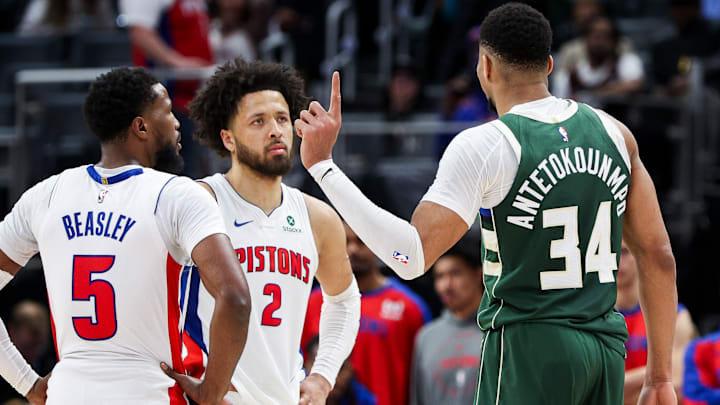The Detroit Pistons’ highest-paid player this season was Tobias Harris, then Tim Hardaway Jr., then bench-center Isaiah Stewart.
You have to get to the 4th spot to find Cade Cunningham, the team’s best player, who barely made more than journeyman backup point guard Dennis Schroder.
That will all change next season when Cade’s new extension kicks in, but the Pistons will still only have one max player and a bunch of guys in the $8-10 million range to go along with the $26 million left on Harris’ expiring deal.
Even after extensions for Jalen Duren and Jaden Ivey, the Pistons should still have a payroll without any bad contracts on it, which is key in the Apron Era, where signing the wrong guy can be disastrous to team building.
Ask the 76ers, Bucks and Suns, teams who were unable to make adjustments because they had bloated payrolls and were carrying one or more huge contracts for guys that weren’t producing. It forced the Bucks and Suns into bad deadline deals that made their situations even worse.
It’s no coincidence that all three showed up in Bleacher Report’s recent ranking of the best and worst contracts in the NBA.
The Pistons were the opposite and showed exactly what they will need to continue to do if they want to have sustained success and avoid disasters.
The Pistons have to keep finding good value for money
The Pistons showed up on the “best” part of the list with Malik Beasley, who was the steal of the offseason, making just $6 million on a one-year deal while being arguably the best 3-point shooter in the league and averaging 16 per game off the bench.
But Beasley wasn’t the only one.
The Pistons got big production from Jaden Ivey ($7.9 mil), Ausar Thompson (8.3), Ron Holland (8.2), and Jalen Duren (4.5).
Tim Hardaway Jr., the Pistons’ 2nd-highest paid player this season, made $16 million, which is below average for an NBA starter. Isaiah Stewart’s deal looks fair and even Simone Fontecchio, who was somewhat of a disappointment, isn’t killing them with his contract, which would be easy to move in the summer.
The key to building a deep team while avoiding the apron penalties is having guys on rookie scale and veteran’s minimum contracts who produce. Of course, you have to have a star or two at the top but having three max guys and no depth has not proven to be a winning formula, as even teams like the Nuggets have struggled in that area after building a top-heavy payroll.
Teams like the Thunder and Pacers seem to have found the right balance of max guys, lesser stars and then a bunch of really good role players making between 8-15 million a year.
Striking out on a max guy (Paul George) or having to pay one who is always injured (Joel Embiid, Zion Williamson) is the fast track to disaster when tax penalties are far more devastating to team building.
That means the Pistons have to nail the draft to keep a steady flow of cheap talent coming in, this is especially true in the second round, where gems who are on minimum deals are even bigger assets than they have been in the past.
The Pistons also have to keep finding veteran bargains like Malik Beasley, which unfortunately means not going crazy to match or exceed any big offers Beasley might get in free agency. Beasley’s value for money is a big part of his appeal, and that lessens if he is making closer to $20 million a season.
It’s all about finding your superstar (Cade), getting two complementary stars who make less (Ausar, Duren, Ivey) and then filling out the team with guys who outproduce their contracts.
It’s about avoiding the big disaster contract and maintaining flexibility to take advantage of teams that have none. Trajan Langdon has nailed the assignment so far, and if he continues, the Pistons can stay ahead of the curve when it comes to team building.
